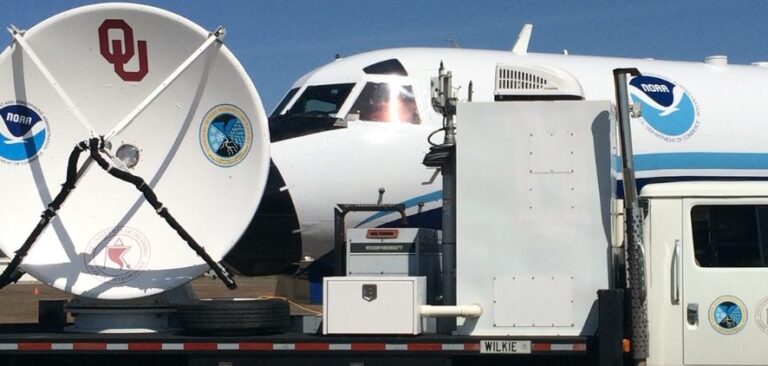The University of Oklahoma’s Shared Mobile Atmospheric Research and Teaching (SMART) radar team says it is has deployed two mobile weather radars to the US northern Gulf Coast to study the landfall of Hurricane Laura, expected to hit the evening of Wednesday, August 26 or early Thursday, August 27. The project is sponsored by the National Institute of Standards and Technology as part of its National Windstorm Impact Reduction Program to develop new building codes for improving the resilience of the built environment including roads, bridges, homes and businesses.
The team says that its radars will be used to map the maximum winds observed during landfall of the storm, determine the duration of severe winds at each location within their domain, and evaluate the impact of tornado-like mesovortices – small-scale rotational features found in storms created by surface heating. These mesovortices are often found on the inner edge of the eyewall during landfall.
The SMART radars are operated through the Cooperative Institute for Mesoscale Meteorological Studies in the College of Atmospheric and Geographic Sciences. Via a partnership with AT&T and The Weather Channel, the SMART radar data will be distributed in real time and made available to local weather service offices, the National Hurricane Center and emergency management.
The OU team will be led by Michael Biggerstaff, professor in the School of Meteorology, and is part of the Digital Hurricane Consortium, a group of university and private sector scientists that deploy instruments ahead of landfalling hurricanes to improve the warning and prediction of storms. The OU team will also coordinate with scientists from Texas Tech University, the University of Florida, the Center for Severe Weather Research and The University of Alabama in Huntsville.




